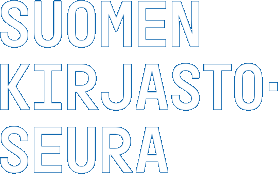THE SUBSTANCE of literary works, just like that of all cultural works, is twofold: the content and the mode of publication.
THE SUBSTANCE of literary works, just like that of all cultural works, is twofold: the content and the mode of publication. The content is interpreted by reading printed books and e-books, by watching films and by listening to music. Interpretation is impossible without the physical object or technology on which the content has been saved.
IN THE HISTORY of publishing, technological development was first slow: paper and printing technology have been used for centuries by now. A significant change took place in the early 1900s with the development of image and sound recording methods. However, this change was also slow and conservative.
PEACE was gonefor good during the latter part of the 1900s as information technology overtook publishing and the distribution of information. Today’s devices and the content saved on them seem to change almost yearly. All this is based on the logic of addictive marketing: your old device is useless, and if it’s not, you can’t experience the latest content production with it.
IN THE ERA of printed materials, we learned to use the materials at school, and libraries were in charge of lending them out. Along with accelerating technological progress, our publishing platforms – the technological tools – have also begun to develop and change so rapidly that libraries have been offered the task of providing instruction on them. Media literacy has been a common discussion topic in recent years, and the teaching of related skills has been mentioned as one of the core tasks of libraries.
HOW should libraries react to their new ICT teaching mission? As various parties are now offering their services on the Internet, it has been proposed that libraries could serve as local banks and tax offices for the citizens who cannot afford computers and Internet connections. The outsourcing is based on modern logic: the tasks are transferred to libraries, while the profit remains with the outsourcers.
A CLEAR division of tasks should be established forICT user guidance: the seller of a device provides basic user guidance, and the library focuses on how different media are used with different technologies. The gamut of devices and of the content distributed across them is starting to be a definite problem for the library institution: there are not enough resources for all the necessary devices and materials. In addition, the fundamental principle of information distribution still seems to work: old tools and materials do not disappear but are accompanied by new means of distributing and producing cultural materials.
THE RELATIVELY large ecological footprint of ICT devices is a special challenge in our technology-centred culture, in which consumer goods become obsolete in no time. Goleman and Norris estimated in 2010 that “with respect to fossil fuels, water use and mineral consumption, the impact of one e-reader payback equals roughly 40 to 50 books. When it comes to global warming, though, it’s 100 books; with human health consequences, it’s somewhere in between.”
